- ▼ SUPPLEMENTING A SELENIUM DEFICIENT HORSE
-
Customer: “I have a question about using the selenium/Vit E supplement. If your horse has tested low for selenium can you use the regular Horse Guard and the Selenium/Vit E both? If selenium levels are within normal limits then just the Horse Guard is fine is that correct? Just wanting to find out if it is safe to use the 2 together. As I am assuming that the selenium/vit E is just that and does not have the vitamins and minerals of the Horse Guard?”
Answer by Ph.D. Equine Nutritionist, Kelsey Johnson Nonella: Yes, you are safe to feeding both the horse guard and the selenium/vitamin E. It usually takes about 8 months to get horses to adequate levels but all horses metabolize selenium differently. Horses that are adequate should only receive Gorse Guard. Like you assumed, the selenium/vitamin e product has no other vitamins and minerals. - ◄AUTOPSY FOUND TO BE LOW IN SELENIUM
-
Customer: “I had a horse expire last week at Washington State University, WSU. The doctor said she was deficient in selenium and thought it wise to give my other horse supplements since they were on the same feed schedule. My horse did not die from low selenium but this was something picked up during autopsy. Do you have a recommendation?”
Answer by Ph.D. Equine Nutritionist, Kelsey Johnson Nonella: The Northwest is notoriously selenium deficient. Horses that are selenium deficient have suppressed immune systems and therefore are more susceptible to diseases they encounter, and can’t have optimal muscle function. I would recommend starting your horses on Horse Guard right away. It will ensure that they are receiving 3 mg of organic selenium a day along with other vitamins and minerals that are typically lacking in a horse’s diet. If you have any older and performance horses they could benefit from Trifecta. Trifecta contains a full dose of Horse Guard to ensure all their vitamin/mineral needs are being met, a gut supplement, hoof and hair supplement, and a powerful joint supplement (5000 mg glucosamine, 5000 mg MSM, and 100 mg hyaluronic acid) in one dose. All fifteen of our horses are fed Trifecta. - ◄3 MG OF SELENIUM FOR MY HORSE WITH PSSM
-
Customer: “My horse has possible PSSM. He is a 1300lb Gypsy Vanner and his vitamin E & Se levels are low. I’m considering your product and the Vit E level in it is perfect but I’m concerned that the 3mg is too much ( my vet has recommended 1mg). My horses lab results are as follows: VitaminE serum = 1.98, Ref range 2.00-4.00 units ug/ml, Selenium Serum = 109, Ref range 120-180 units ng/ml. Any thoughts?”
Answer by Ph.D. Equine Nutritionist, Dr. Kelsey Johnson Nonella: I am sorry to hear about your Gypsy Vanner. Selenium and vitamin E serve as antioxidants to aid the body in removing harmful free radicals from the body caused by oxidative stress. Signs of selenium and vitamin E deficiency can include muscle cramping and stiffness, much like PSSM. I think that 3 mg of organic selenium will benefit your horse greatly. I did my doctoral research on selenium in horses. Horses supplemented with 3 mg of organic selenium have been showed to have increased immunity and combat oxidative stress more effectively than horses supplemented with 1 mg of selenium. If you are interested in reading an article on my research here is a link to the article https://www.horseguard.com/innovative-selenium-research/ Increasing your horse’s selenium and vitamin E levels will help him to handle his PSSM better. I would also recommend feeding no grain, and only grass hay. If he needs extra energy, feed him something low in starch and high in fat, such as soybean meal or beet pulp. - ◄TOO MUCH SELENIUM FOR MY RECOVERING HORSE?
-
Customer: “I wanted to order the Mega Dose for my horse who is recovering from Anaplasma (a tick born disease here on the east coast) I also wanted to get the vit E and organic Selenium supplement. However, I wanted to make sure that that wouldn’t be TOO much selenium.”
Answer by Ph.D. Equine Nutritionist, Dr. Kelsey Johnson Nonella: Thank you for the question. Building your horse’s strength and immunity back up is crucial. Selenium and vitamin E are important in aiding the body in recovery. The 3 mg of organic selenium and vitamin E in Mega-Dose will benefit your horse greatly. I did my doctoral research on selenium in horses. Horses supplemented with 3 mg of organic selenium have been showed to have increased immunity and combat oxidative stress more effectively than horses supplemented with 1 mg of selenium. However, I would just feed Mega-Dose and not the additional vitamin and organic selenium supplement. It would be an unnecessary added expense. Mega-Dose contains your complete vitamin/mineral supplement that your horse needs. - ◄DO WORKING HORSES NEED MORE SELENIUM THAN PASTURE HORSES?
-
Customer: “Your product Horse Guard seems to indicate that you feed 2 oz no matter what the weight or type of use the horse is doing? It is my understanding that the more a horse is used the more sel & vit E they need. My horses all weigh 1100+ lbs. How can you feed 2 oz to an 1100 lb team roping horse and 2 oz to an 800 lb pasture ornament and not be under supplementing one and over supplementing the other? Or even the same 1100 lb horse when he is being ridden 3-4 times a week team roping vs when he is not being ridden at all. Especially given that the organic selenium is supposedly absorbed more readily than the inorganic (such as MegaSel)”
Answer from Equine Nutritionist, Del Johnson: There are a lot of things to be addressed here but let me answer the questions that you pose directly about selenium. “Your product Horse Guard seems to indicate that you feed 2 oz no matter what the weight or type of use the horse is doing” When fed as directed on the package Horse Guard is fed at 1 ounce per 500 lbs body weight. So a 500 lb horse would get 1 ounce and a 1000 lb horse would get 2 ounces. “How can you feed 2 oz to an 1100 lb team roping horse and 2 oz to an 800 lb pasture ornament and not be under supplementing one and over supplementing the other? Or even the same 1100 lb horse when he is being ridden 3-4 times a week team roping vs when he is not being ridden at all.” In this case you are correct – the two horses that are being worked would get the same selenium formulation. We have no research that indicates the difference in the requirements for horses under stress of exercise and those at rest. We do feel that the horse that is not being ridden would require less than the horse that is being ridden hard each day. Still it is good nutrition practice to provide both horses with the level of .3 parts per million selenium (3 mg per day for a 1000 lb horse) There are two reasons: First the horse that is not being worked hard could come under other forms of stress that would increase his requirement for selenium. For example challenge of disease etc. Second the higher selenium level is far from toxic selenium which would be more than 20 mg per day. “Especially given that the organic selenium is supposedly absorbed more readily than the inorganic (such as MegaSel).” Research indicates that organic selenium is not absorbed more readily but is retained better in the body and functions more efficiently. - ◄HOW MUCH SELENIUM IS IN HORSE GUARD AND WHY?
-
Customer: “How much Selenium is in Horse Guard and why?”
Answer from Equine Nutritionist, Del Johnson: All of our multi-vitamin/mineral products provide 3 mg. of organic selenium to a 1000 lb horse. Horse Guard provides it in a 2-ounce dose. Nutritional recommendations vary greatly no matter the element to which they refer. Most nutritionists are not from a selenium-deficient area and know little about the deficiency. We were the first company to provide an oral equine supplement for selenium in 1978. Selenium research was started at Oregon State University. Before that research, there was no recommendation for selenium. Dr. Stowe at the Michigan State University did original work with selenium in equines. His work included horses that were not being used or stressed. The NRC recommendations that followed were for 1 mg per day for a 1000 lb horse. After that time most recommendations by nutritionists were for 1 mg per day. Research in the early eighties showed that baby pigs under stress of weaning did much better on a diet of .3 ppm selenium. As a result of testing horses, we began recommending a higher level of selenium for horses under stress at 3 mg per day. As you know horses are typically under much more stress than farm production animals. Nutritional science really does not know enough about selenium metabolism. As a result, we are currently funding a selenium study at West Texas A&M. This work is being done by my daughter who is completing her Ph.D. work. The study takes selenium sufficient horses and puts them on a selenium-deficient diet with hay from Central Oregon. We monitor the depletion of selenium in the blood over time. That phase is complete. All of the horses were significantly deficient at day 112. We are currently in repletion phase and are now monitoring the repletion by adding organic selenium to the diet with Horse Guard. The recommendation for Horse Guard is 1 ounce per 500 lbs body weight. That provides 2 ounces of Horse Guard per 1000 lbs. Two ounces of Horse Guard provides 3 mg of organic selenium per 1000 lb horse per day. The toxic level of selenium is above 20 mg per day. You would have to feed almost 8 times the recommended dose of Horse Guard each day to reach toxicity. I hope this helps. I apologize for the length of the response but we take great pride in our leadership in equine nutrition especially when it comes to selenium. - ◄SELENIUM IN SUPER WEIGHT GAIN
-
Customer: “Morning, I have a 32-year-old mare who is not holding weight. She is presently on total equine, will eat some chopped hay, gets algae, noni and just began omega horseshine. She is out on 24/7 pasture as well. I came across your product which makes sense. However, we are here in middle Tennessee and I was wondering if your product would work here as well considering you have extra selenium in it. Thanks so much.”
Answer from Ph.D. Equine Nutritionist, Dr. Kelsey Johnson Nonella: It sounds like you take really good care of your mare. As our horses age, it gets harder and harder to keep weight on them. I think that Super Weight Gain would be a great product for you to add to your mare’s diet. Excess selenium shouldn’t be a concern in your area. Tennessee has variable selenium levels, with some areas that are selenium deficient. So your mare may actually benefit from the added selenium. The prebiotics and probiotics, vitamins and minerals, protein, and fat in Super Weight Gain should help your mare to keep weight on. Good luck and thank you for your question. - ◄COULD MY HORSE BE SELENIUM DEFICIENT?
-
Customer: “What symptoms are seen in selenium deficient horses? I have a 30 yr. old AQHA gelding, about 2-3 months ago he went off his feed and water, seemed depressed and was moving stiffer than usual. Thats when I noticed his muscles twitching especially in his shoulder and flank areas. The twitches range from 4-5 up to 20-30 per minute in each area; with an average of 10-15 per minute. He is constantly shifting his weight on his feet when standing ( he is navicular) and does a lot of licking with his tongue. I live in the Pacific NW. He is on lush green pasture and local 2nd. cutting grass hay; beet pulp with an alfalfa cube soaked in and has a mineral salt block which I just noticed does not have selenium in it. He is on previcorx for arthritis and a probiotic (probios). He has tested negative for EPM (just lost a horse to that) PSSM and HYPP. Other than greying in his face he still has the body of a halter horse. Any help or ideas would be greatly appreciated.”
Answer by Ph.D. Equine Nutritionist, Kelsey Johnson Nonella: Sorry to hear about your horse. It definitely sounds like he is selenium deficient. Depression, muscle stiffness, and muscle spasms are all symptoms of selenium deficiency. Interesting fact, plants have no requirement for selenium, so you can have an amazing, very nutritious hay crop with almost no selenium in it. You would be best to start him on Horse Guard right away. From his symptoms it sounds as though he is pretty deficient in selenium, so you may consider having your veterinarian check his whole blood selenium levels, and if he is low enough he may need an E-Se shot, and then a double dose of Horse Guard for 6 months, after which you could return to just 2 ounces a day. I would recommend feeding Horse Guard and putting a plain white salt block out after the mineral salt block is gone. Selenium salt blocks contain less than 10% of the selenium that your horse needs per day. - ◄TOO MUCH- FEEDING HORSE GUARD AND RED CELL
-
Customer: “ I feed a full scoop of Horse Guard to my 15 year old barrel horse mare daily. I was told to add 2 ounces of Red Cell to her daily bucket. However, I am concerned that I may be feeding too much selenium. She gets fed alfalfa twice daily, soaked beet pulp once a day, and a full scoop of Horse Guard with her bucket.”
Answer by Ph.D. Equine Nutritionist, Dr. Kelsey Johnson Nonella:Thank you very much for feeding your mare Horse Guard. She is getting everything that she needs with the alfalfa, beet pulp, and Horse Guard. Is there specific reason why you started adding Red Cell to her diet? Red Cell is another vitamin-mineral supplement that provides your horse an inorganic source of selenium. So, although you don’t need to worry about selenium toxicity you are having an unnecessary cost. - ◄IS THERE ENOUGH SELENIUM IN TRIFECTA, THERE IS NOT IN MY PLATINUM PERFORMANCE FOR MY AREA
-
Customer:“Is there enough Selenium in Trifecta for horses in a Selenium deficient areas? I am feeding Platinum Performance now and even though there is Selenium in that supplement, it is not enough for this area in Northeastern California.”
Answer by Ph.D. Equine Nutritionist, Kelsey Johnson Nonella: Yes, 8 ounces of Trifecta contains 3 mg of 100% organic selenium, which are adequate amounts of selenium to horses in extremely deficient areas. I think that you will be extremely satisfied with Trifecta to only provide your horse with adequate selenium levels, but also provide hoof, joint, and gut support. - ◄CONSIDERING THE FREE CHOICE MINERAL, BUT DON'T LIKE SODIUM SELENITE FOR SELENIUM
-
Customer: “I have been researching free-choice mineral supplements and see the repeating theme that salt should be separate. I was going to purchase a “stress kit” from Advanced Biological Concepts but they use sodium selenite. I realize this is asking for your time on a 3-horse owner with little benefit to your company, but I would really like some information on the use of your free choice mineral with salt. Is the salt being included that big of a deal? I’m likely overthinking this whole thing, but horse people are nuts so I reserve the right to be psychotic! 🙂 We currently feed horse guard but the herd setup makes me dread feeding time.”
Answer by Ph.D. Equine Nutritionist, Kelsey Johnson Nonella: Thank you for your question. We love to help all horse owners as we want to help ensure as many healthy horses as possible. Our essential mineral salt unfortunately also uses sodium selenite. The reason being the viability of selenium yeast is greatly decreased by the salt. Therefore, you lose the benefit of organic selenium when mixed with salt. Another reason why it isn’t ideal to use free-choice mineral supplements with salts is horses intake can vary greatly due to weather. So if it is very cold your horse is going to consume much less mineral salt than if it is hot or they are sweating a lot. While the most ideal way is providing your horse’s each a dose of Horse Guard, we understand that this isn’t possible for everyone and why we sell the free choice mineral. By providing the free choice mineral at least your horses are getting most minerals rather than none. Another option you may consider is feeding Simplete. We have 15 horses ourselves and run them in herds of 4-6 horses. We have great success with hanging buckets(one for each horse in the pen) on the fence four horse lengths apart and simply feeding them two pounds of Simplete in each bucket. This way we don’t have to worry about mixing up supplement for each horse because two pounds of Simplete contains a full dose of Horse Guard ensuring all their vitamin and minerals needs are being met.
Hi, I have 2 horses that are selenium toxic. I’m wondering if you have any information pertaining to dealing with this. Thanks
———
Horse Guard replied:
Hi Corrie, sorry to hear about your horses. If they are Selenium toxic I would remove all supplements containing Selenium until they test in normal ranges, as well as testing your hay. If your hay comes back high in Selenium I would look for a different source or hay from a different location If you reside in a place with Selenium accumulating soils. Provide lots of access to fresh water. Let us know I we can answer any more questions!

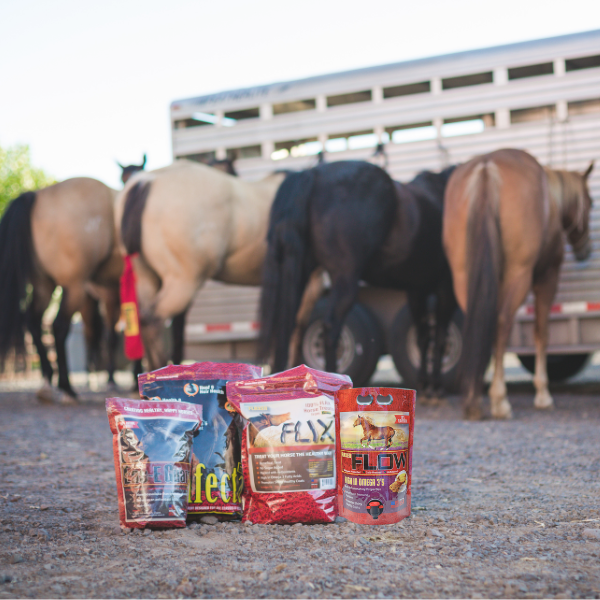
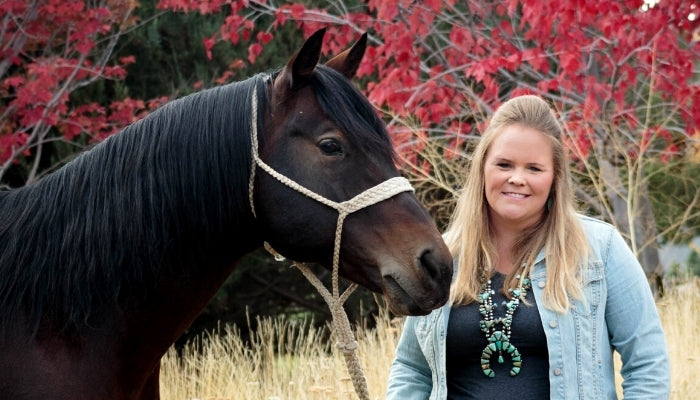
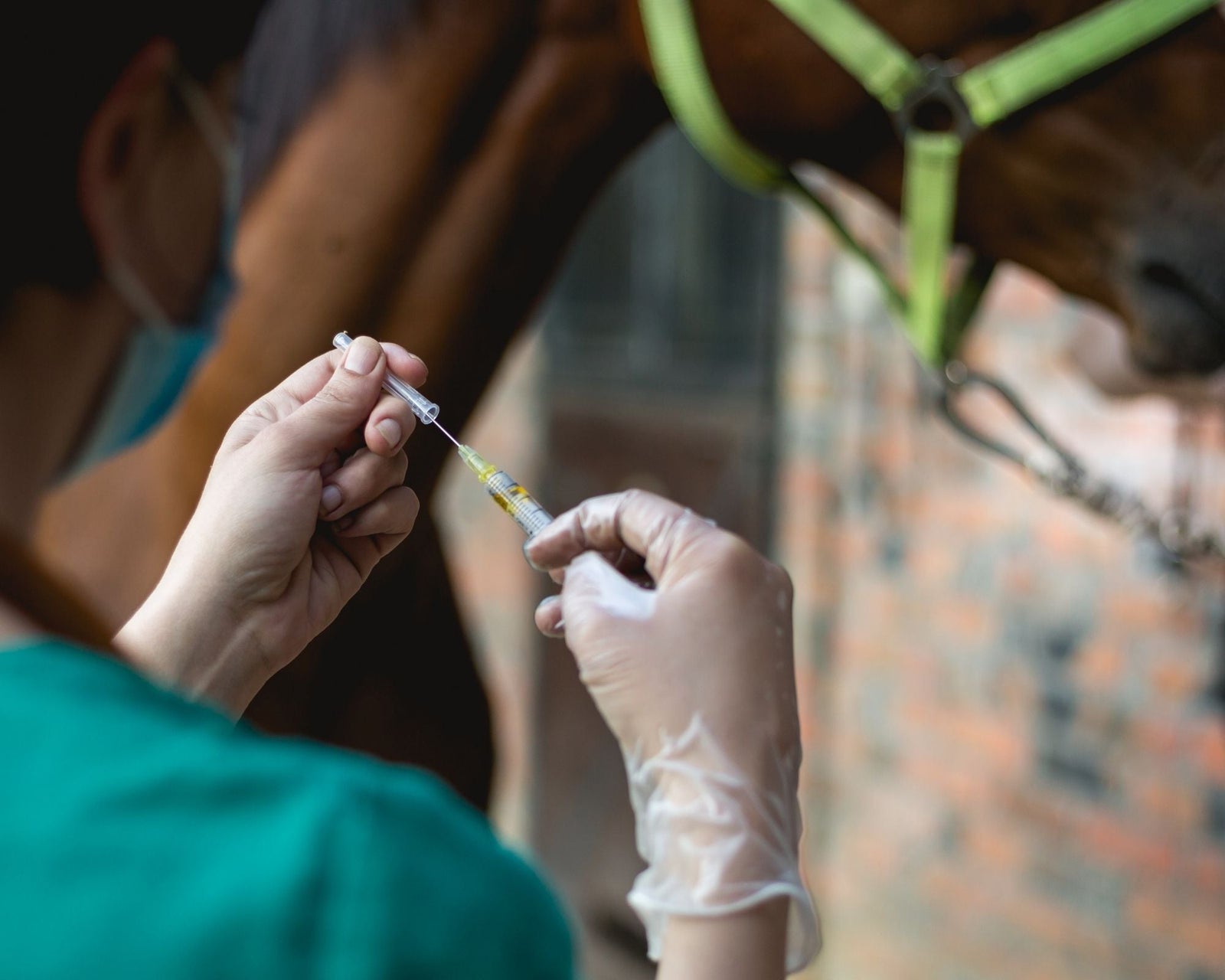
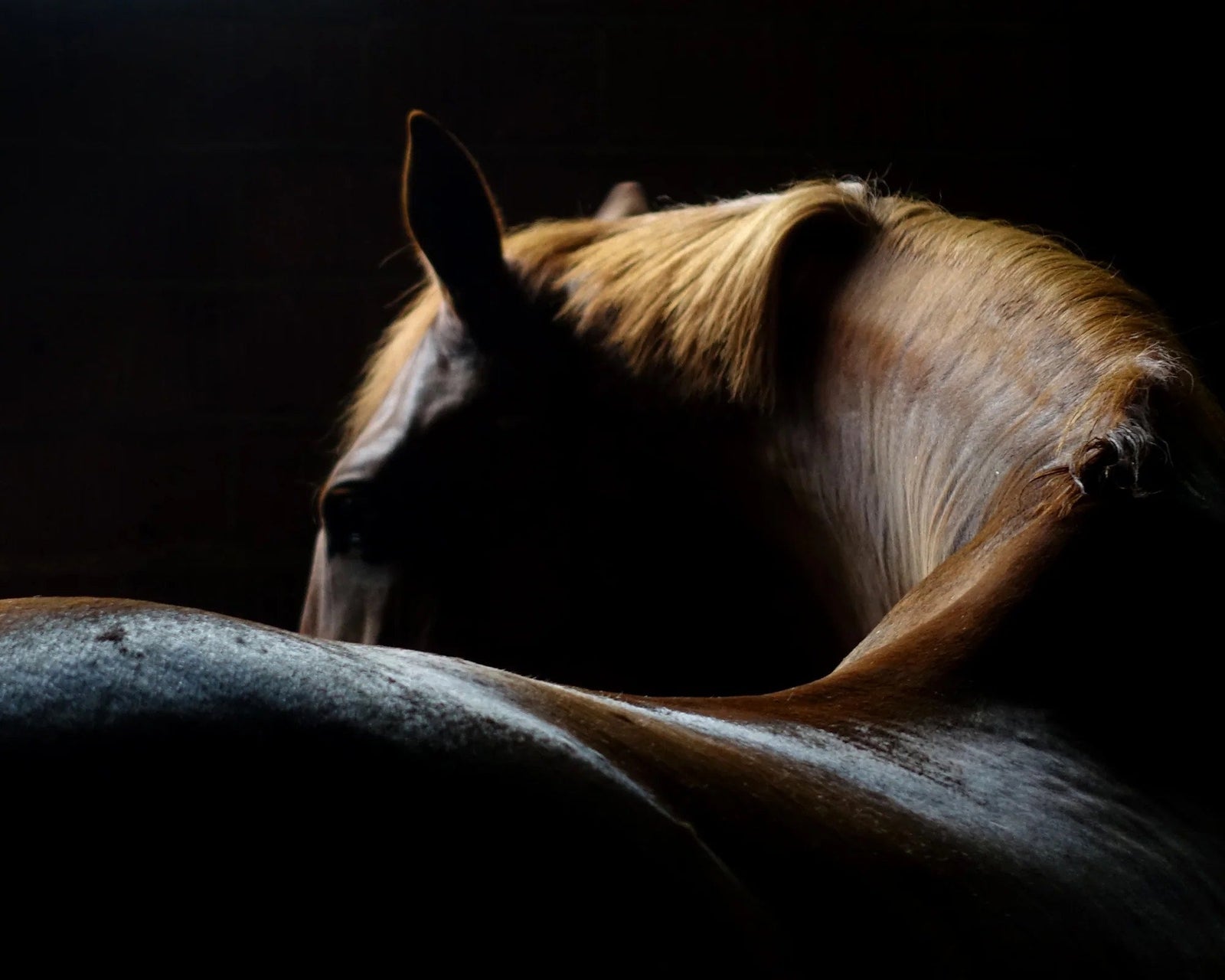
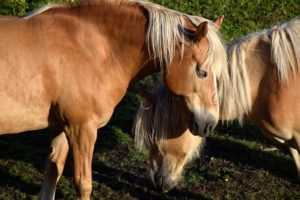
Jan
November 02, 2022
Hi, I just read through your selenium material and have some concerns about my horse. He is a 16 year old shire draft horse MAY have EPSM (not diagnosed) because he lost weight and muscle tone last summer. It could be that other horses bullied him at feeding so he wan’t eating enough(that has been fixed!) He also tested positive for EPM last summer and was successfully treated. Since then, he has regularly tested negative for EPM. I have been giving him 5000 IU’s of vitamin E + 1.5 grams selenium supplementally daily since last summer, as per the vet recommendation . After reading the material, I am wondering if that is necessary as I recently changed his pelleted feed to a lower carbohydrate and higher fat feed, increased the amount of feed, and he is getting selenium through this complete feed. He is a backyard horse who gets timothy grass hay flakes; there is no grazing in my area. I am concerned about the supplementation causing selenium toxicity. Do you have any advice based on your knowledge of selenium and horses? Thank you,Jan
———
Horse Guard replied:
Jan,
Thank you for the question. I believe your veterinarian probably recommended 1.5 mg selenium along with 5000 IU of vitamin E to be supplemented daily. Double check the label. At 1.5 mg of selenium and the size of your horse. He should be getting the right amount of selenium between his complete feed and supplements. For reference we recommend 3 mg in the total for 1,000 pound horse. In order to be certain, you should add up the amount of selenium and the pounds of complete feed you are feeding. For example, if you are feeding a feed that listed selenium at 0.3 ppm, and are feeding 2 pounds, your horse is getting 0.3 mg of selenium of that feed. Add that with the 1.5 mg from the supplement and your horse is only receiving 1.8 mg of selenium. If you are feeding 6.6 pounds of a 0.3 ppm your horse is getting 0.9 mg from the feed.
Let me know if I can help answer anymore questions.
Kelsey Johnson Nonella, Ph.D., PAS
Equine Nutritionist, Horse Guard, Inc.<http://www.horseguard.com/>